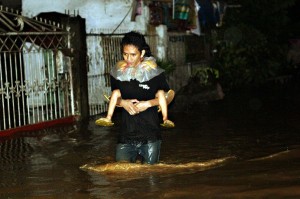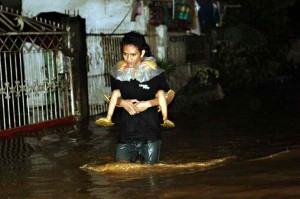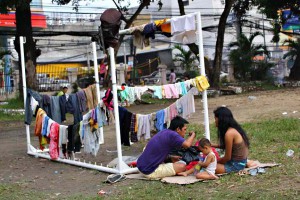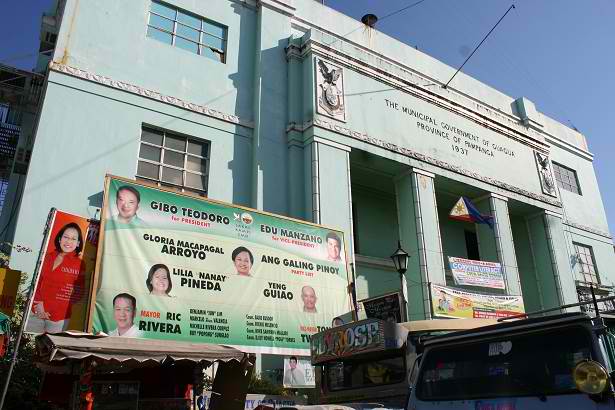BY ERWIN MASCARIÑAS
CAGAYAN DE ORO CITY – Floodwaters brought by storm “Sendong” swept Cagayan de Oro and Iligan city and other parts of Central Mindanao while people were sleeping Friday night last week.
Power went out. In the darkness of the night, people panicked as they tried to flee from the rampaging mud and debris.
It was chaos. Heartrending cries for help filled the air. Mothers and fathers watched in horror as they lost hold of their children, carried away by floodwaters.
Caught unprepared, local government units were able to establish disaster coordinating efforts more than six hours after Sendong sent its deadly waters.
On the sixth day, 674 people from Cagayan de Oro were confirmed dead, while 502 were still missing.
Benito Ramos, executive director of the National Disaster Risk Reduction and Management Council (NDRRMC), said the number of fatalities is still rising as more dead bodies are found.
The survivors, now homeless, are cramped in different barangay halls and public schools. The evacuation center in Tomas Saco, Macasandig houses over 700 evacuees. There are no facilities in the barangay hall such as bathrooms, so the place is beginning to develop a foul smell. The evacuees, especially the children, are getting sick.
The flashfloods also destroyed the two major pipelines of the city. About 70 percent of Cagayan de Oro still does not have water supply. The Cagayan de Oro Water District estimates that it will take about 27 days for water supply to be back to normal.
As millions worth of aid and relief goods started to pour in the city, thousands of families complained about the lack of proper distribution of relief and aid to the victims. Several residents from different parts of the affected barangay’s were angry because oftentimes those who get the relief goods live near the barangay halls or are close or politically affiliated to the barangay chairman.
Five days after the tragedy, President Benigno Aquino visited Cagayan de Oro and Iligan and declared a national state of calamity in the disaster zone to speed up relief and rehabilitation, as well as secure funding from international organizations.
Adding to the grief and the sufferings Cagayan de Oro Mayor Vicente Emano did something appalling: ordered the dumping of cadavers to a garbage landfill site.
Members of the National Bureau of Investigation who came to help in identifying the dead said it was the first time the Disaster Victim Identification team of had to deal with “this kind of working environment.”
Dr. Wilfredo Tierra, lead forensic expert, said, “There is always a more pleasant, secure, and safe place for us to work.”
On Wednesday the National Grid Corp. allowed the use of its hangar in Lumbia airport as the site for the body profiling.

(Erwin Mascariñas is a photojournalist based in Mindanao.He recently attended a photojournalism workshop conducted by VERA Files.)


